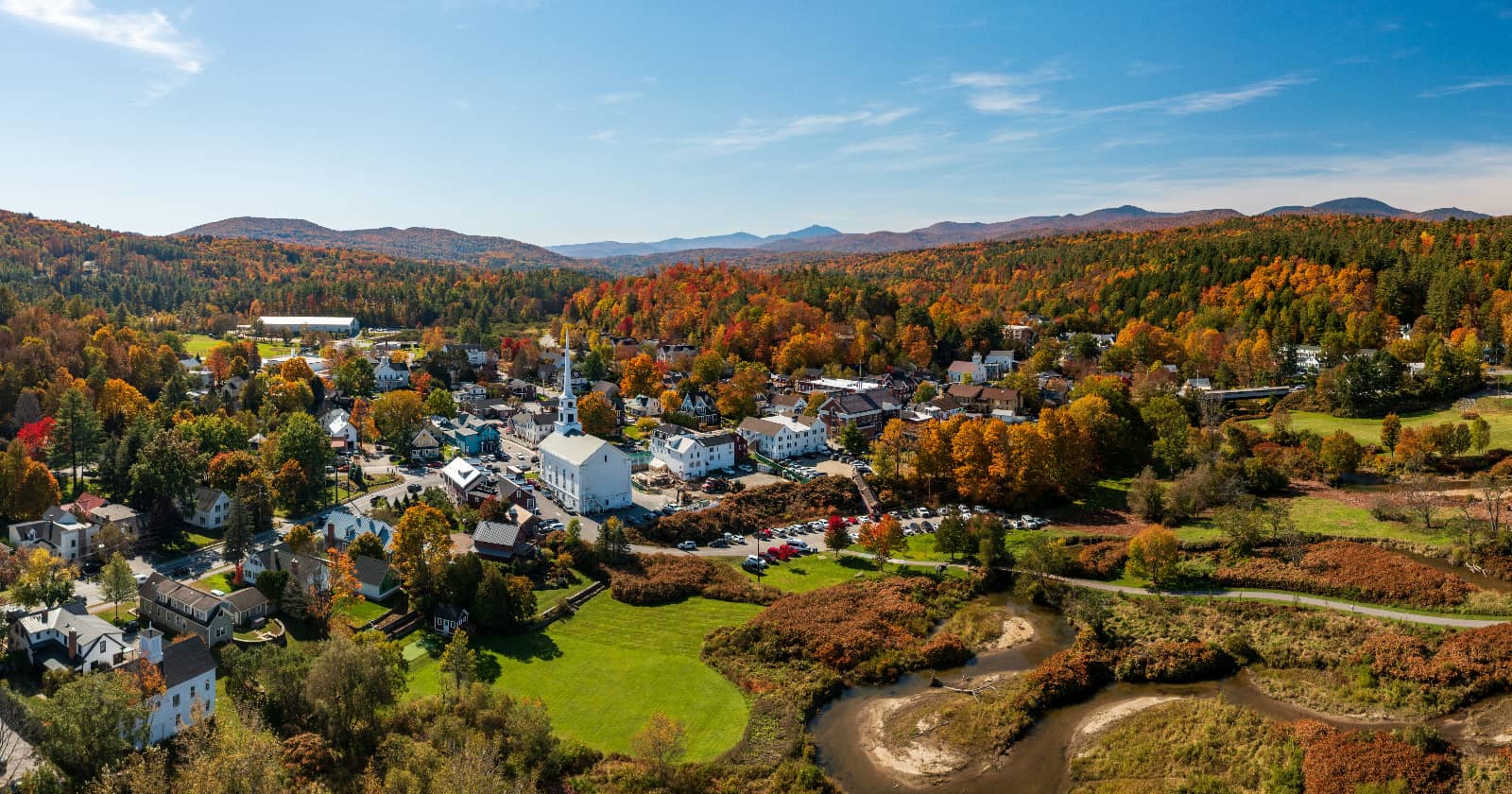Don’t buy a new or used RV without this buyer’s checklist! Save time and ensure you don’t miss anything when buying. This RV inspection checklist will ensure you get the RV you want and not someone else’s problems.
Any purchase as big as an RV should not be made until your research is done and you have completed a solid inspection. It can, however, be overwhelming with so many options and different RVs to consider.
A simple piece of advice would be to decide on the type of RV and must-haves you want before you go looking to buy. You may spend time at dealers or searching online to check out floor plans and models and manufacturers. However, when the time comes to look for potential buys you should know what you are looking for. An RV shouldn’t be an impulse purchase.
There are a couple of reasons for this. The first is, you don’t want to buy the wrong RV for your needs. Secondly, you do not want to buy an RV with lots of problems and endless repair and maintenance costs.
Once you have decided on the right floor plan and options for the specific type of RV you want you can narrow down your search and view the RVs you are serious about buying. iRV2 can be a great source of information. You can also find and chat with RVers who own models you are looking at.

Things You’ll Need For a Succesful RV Inspection
Buying an RV isn’t like buying a coffee pot, it is a big decision and oftentimes a significant financial commitment. There are lots of systems to check and items and areas to inspect. In the case of motorhomes and camper vans, this is amplified. You are now inspecting essentially two vehicles: the drive vehicle and the living vehicle.
This is why having an RV inspection checklist with you is so important! It is simply too easy to miss important items that after the purchase may leave you with a less than ideal RV for your needs or a money pit.
In addition to a checklist, have another person with you. This is even more important if you are a first-time RV buyer. With your RV inspection checklist in hand and a friend by your side, you are ready to check out RVs!
Don’t forget to have these basic inspection items with you:
- Your inspection checklist
- Notepad and pen
- Flashlight
- Gloves
- Coveralls or something to kneel and lay on
- Rag for checking fluid levels
- Multidriver for removing access panels
Items to Note Specific to Each RV
If you are looking at multiple RVs, it will be important to take note of things to compare RVs. These things will be specific to each RV. If things come down to having to choose between multiple RVs, these little things may help you make your decision.
- Make, model, and year of the RV
- Mileage (if applicable)
- Asking price
- Weights: dry and max
- Tank capacities: black, grey, fresh, and fuel
- Dimensions: height, width, length, and wheelbase
- Service and warranty documentation
Exterior Inspection
When you show up to view potential RVs, likely the first thing you will do is look around the exterior. Stand back and take a slow look at your future RV. Take the time to do a thorough inspection and don’t feel rushed. As you look around, take notes so you don’t forget to go back and inquire about any issues you see.
If possible, choose a day with nice weather. If you’re cold or it’s raining, you will rush the inspection. Dress appropriately and plan to spend as much time as needed.
Your exterior RV inspection checklist should include the following:
- Exterior surface: Note any rust or fiberglass and metal panelling damage
- Seals: Including the windows, doors, and roof
- Roof covering: Look for tears or repairs
- Windows: Do they fully open, close, and lock? Check the glass condition
- Doors: Do they close tight? Do the locks work?
- Tires: Confirm they have the proper pressure, even wear, manufacture date, and correct weight rating
- Lights: Do they work? Are they LED?
- Slide seals and all slide motors and components: Slide should extend and retract smoothly. The seals shouldn’t be dry or damaged
- Awning: Look for mold and mildew, smooth operation, and at the condition of the awning material
- Storage compartments: Inspect the hinges and locks for smooth operation
- Propane and battery storage: Look for proper components for securing the tanks and batteries
Interior Inspection
When you enter an RV it can be easy to just look at what’s on the surface and get fixated on colors and decor. These things are a consideration and if you will be painting and changing upholstery these costs can add up. But that isn’t all you should be looking at.
On the inside, it is important to look for some hidden issues. Mold is the biggest one along with any signs of water damage. Pay particular attention to areas of moisture. Bathrooms and kitchen areas should be inspected very closely.
Your interior RV inspection checklist should include the following:
- Floorplan: This can be difficult to change in an RV, will it work for you?
- Floors: Walk and push on all areas of the floor checking for soft spots. Confirm with a look underneath the RV
- Leaks and water damage: Areas near plumbing and around windows and doors are likely locations for leaks or water damage. Any roof vents or items attached to the roof are also areas of conceren
- Doors and windows: Check the glass condition and that they all open,close tight, and lock
- Cabinet condition: Check handels and hinges, look for peeling surfaces. Is there enough cabinet space?
- Floor coverings: How is the overall condition? Is there carpet and if so, what is the condition?
- Color scheme: This can be changed but it may help you decide between multiple RVs
- Shower size: Will it fit you comfortably?
- Storage space: How much storage space is there and how accessible is it?
- Smells from pets or smoking: These can be difficult to get rid of
- Sleeping arrangments: Number of beds and the sizes of the beds
Electrical Systems
You don’t have to be an electrician to do a solid electrical inspection on an RV. Obviously, you won’t be pulling wires and performing extensive circuit tests but there are things you should be checking out. It may not always be possible, however having the RV plugged into shore power while doing an inspection will allow you to check more of the following items:
- Power cord: Pull the power cord out and inspect the entire length for damage. The plug and prongs should be damage free
- Batteries: Check the water level (non-sealed battery). Look for sings of corrosion and check the voltage with a multimeter
- Fuse panel: Look for any blown fuses that may affect other items you will be inspecting. Double check any added wires that look out of place from additions someone may have made
- Converter/inverter: When running there should only be a quite hum.
- Air conditioner: Run the AC to ensure it cools effectively. Inspect the filters and check the rooftop unit for signs of leaks or noisy motors
- Appliances: Ask to have the fridge running before you arrive to see if it is cooling
- Lights: Check all light switches for working lights
- Outlets: Plug your phone charger into all outlets to check for power
- Stereo and TV: Turn on both and ask if there are remotes
- Smoke and gas detectors: Press the test buttons to confirm the units work. The expiration date should be on the back of the units
Plumbing Systems
The plumbing in RVs is pretty basic. The majority of it is accessible via access panels. Checking for leaks is the big thing. A small leak behind a panel that has been unnoticed for years could have done significant damage.
Again, it is ideal if the RV can be connected to a water source for inspection. The following are plumbing RV inspection checklist items:
- Faucets: Run all faucets and look for any leaks at the connections
- Sinks: Check the drains for leaks and that they are draining freely
- Toilets: Check all the connections for leaks and the toilet seal inside the toilet. Check that the toilet is firmly attached to the floor
- Shower / tub: Run the faucet and shower head. Check the caulking around the tub unit. The drain should be open and flowing
- Grey and black water drains: The drains should have caps and they should be able to open to flow freely.
- City water connection: Look for leaks and at the condition of the threads. Check inside the RV where it enters as well for any water damage or signs of leaks
- Freshwater drains and fill: The tank should have a drain valve that opens and closes. The fill hose should be attached and in good condition
- Winterizing bypass systems: If equiped, all valves should be working freely and routed properly
- Water pump: Switch it on and check for water. The pump should be running smoothly without any loud high pitched noise
Gas Systems
Ensuring there are no leaks in the gas system is an important part of the RV inspection. Many items in your RV rely on propane including the stove, fridge, furnace, and water heater.
Having a handheld gas detector is a must for RVers and will be helpful during your inspection for the following things:
- Propane tanks: Are they certified? Do the valves open and close freely?
- Regulator and connections: Check for leaks and cracked or pinched hoses
- Stove / oven: Light both and check for strong blue flames. Check connections for any leaks
- Furnace: If there is a site window, look for a clean burning flame. Check all the connections for leaks. Run the furnace until heat is flowing through RV to ensure the unit works effectively
- Water heater: Check for clean burning flame and for any leaks at the connections. Confirm the unit produces hot water
- Fridge: Check for leaks at the connections and proper cooling of the fridge and freezer
Mechanical Systems

If you are purchasing a trailer only there will be limited items for inspection. The brakes and wheel bearings, along with suspension components are your focus. All of these will be basic and are mostly DIY repairs when needed.
If you are looking at motorized RVs then there is much more to consider. The suspension will be more involved as will the brakes and wheel bearings. On top of this, you have the complete drivetrain of the vehicle. For many, having a mechanic do an inspection of these components is money well spent.
Before closing a sale, you may want to have this inspection done by a certified mechanic. Prior to that, there are some checks you can do to see the overall condition of the mechanical systems and get a feel for how maintained the RV is. Here are some things to add to this section of your RV inspection checklist:
- Fluid levels: Engine, transmision, brake, power steering, coolent, and hydralic
- Air filter: Is it clean? Has it been changed lately?
- Gauges with the engine at operating temperature: Look for any out of range readings. Are there any dash lights indicating problems?
- Belts and hoses: Should be in good condition and not dry or cracked. Belts should run smoothly and quietly
- Tire wear: Look for even wear and at the remaining tread life
- AC and heat in the vehicle: Run both for a period of time to ensure they both work
- Power windows, locks, mirrors, and seats: Check that all function as they should
Road Test
There are certain things that need to be checked on a road test. You may choose to have a mechanic perform this inspection for you. However, you should still do a road test yourself to get a feel for the RV. After all, you’ll likely be spending lots of time in the driver’s seat.
- Smooth acceleration and shifting: Vehicle shouldn’t hesitate and the acceleration should be smooth. Shifting in and out of gears should be easy and smooth as well
- Smooth, strong braking: Brakes should be strong and steady. Any noise or vibration should be checked by a mechanic
- Tight steering: Vehicle should be responsive and manuver with ease. Any noise or loose feeling should be checked
- Quiet, smooth suspension: Any harsh movements or noises from the suspension system should be inspected further
Final Decision
After all of these items and areas have been inspected it’s time to make a decision. It can be tempting to make a decision right away, and sometimes this may be necessary to get an RV that is a hot buy.
If possible, leaving a deposit to give yourself a day to review everything and make a final decision without being rushed is best. In some cases, this may not be an option. If so, you should feel pretty confident with this completed checklist that this is or isn’t the right RV for you.
If you have multiple RVs you have looked at, comparing your lists and notes is smart. Maybe you take your review of other RVs with you and just take some time in your vehicle to do a quick comparison on the spot before committing. This is a big decision that can be overwhelming but should never be rushed.
Buying an RV should be a fun exciting adventure. However, it can become stressful and exhausting as well. Start by finding the right type of RV along with the layout and options you need. Then you can narrow your search and start to seriously look. Your budget will eliminate more RVs and then you can view and inspect the remaining possible RVs.
Having your RV inspection checklist along with any questions you want to ask, ensures you don’t miss anything. The perfect RV, new or used, is subjective to the buyer. Whatever RV you end up with the main thing is to get out there and enjoy it!
Continue reading:





maybe on propane tanks, add to look and see if DOT, not older than 10 (maybe 12 years) or they will have to be recertified.
I would *HIGHLY* recommend getting an RV inspection from a certified NVRIA inspector. We did this, and it saved us money. We were lucky, there were no “hidden problems”, but a couple of things allowed us to re-negotiate and save a little on the seller’s price.
Find an inspector here:
https://nrvia.org/locate/
Nice list, but what do you do with brand new 5th wheel, that pdi was OK, but you drive 8 hours, get it home, open up the slides and see where trim was cheaply patched, refrigerator rubbed island counter top, floor has damage from slide and daylight under kitchen slide. How did this get past factory qa?? Pdi directs your inspection and some issues, like shower leaking, not found until first trip.